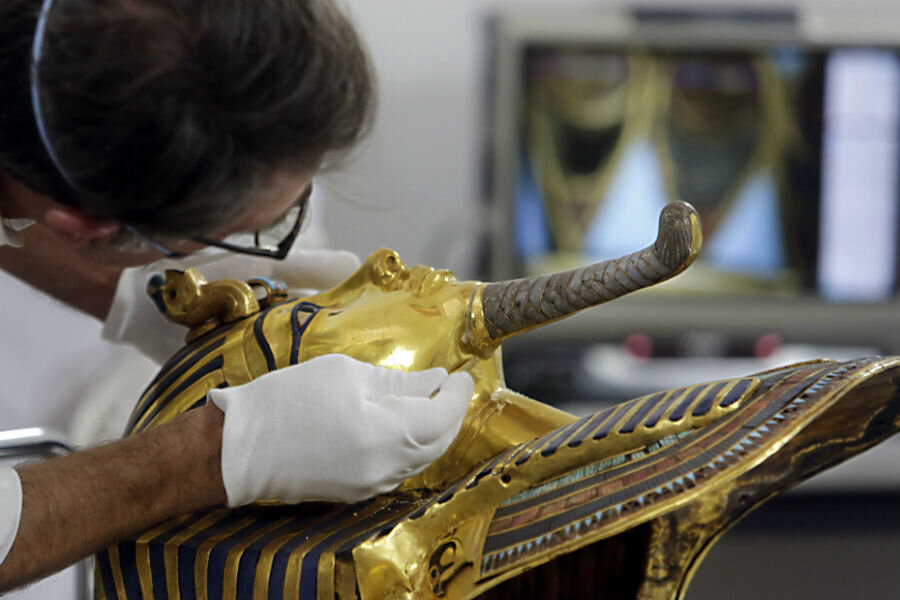Eight Egyptian museum officials face trial over King Tut's broken beard
Loading...
It’s a curator’s worst nightmare: A clumsy museum-goer knocks over a priceless artifact, perhaps causing irreparable harm. Except, in the case of King Tut's solid-gold burial mask, on display at the Egyptian Museum in Cairo, the culprits were the curators themselves.
Egyptian prosecutors said eight museum employees will be charged with negligence in the problematic handling of King Tutankhamun's mask when its blue-and-gold braided beard fell off. In the ensuing scandal that local media later dubbed “Tut’s disgrace,” the broken piece was glued back on with an ample amount of epoxy.
But conservators noted that the glue has since caused additional damage to the 3,300-year-old artifact made of 11 kilograms of pure gold.
The initial accident took place in August 2014, but prosecutors did not begin their probe into the damage until last year. When news of the scandal finally broke, public outcry went as far as calling for the discharge of Egypt’s Minister of Antiquities, Mamdouh Eldamaty.
The eight employees currently awaiting trial include the former director of the museum, which contains the world’s most extensive collection of Egyptian antiquities, as well as three restoration experts and four conservation officials at the Ministry of Antiquities.
“The accused violated the scientific and professional rules in dealing with the relic although they presumably know that its value and importance goes beyond the local borders,” a prosecution statement said.
The investigators added that the employees at hand acted with “gross negligence” and violated the professional rules of the workplace during a period between August and November 2014. The reattachment of the beard piece was not scientifically sound. The employees, prosecutors said, not only handled the repair “recklessly” but also tried to cover up for their subsequent actions. They allegedly used sharp instruments to remove the epoxy, causing scratches and damages that remain on the mask.
"The [museum] officials dealt recklessly with a piece of an artifact that is 3,300 years old, produced by one of the oldest civilizations in the world," the Administrative Prosecution said Saturday in a statement to state-run Ahram Online.
A date has not been set for the trial.
Since the initial incident took place in 2014, the involved parties have given different accounts of what actually happened. A museum conservator said the beard was first knocked off during cleaning, but others said the piece loosened with age.
Last October, following a donation of about $54,000 from Germany, a team of conservators under German expert Christian Eckmann undertook re-repairing the mask. Removing the adhesive device and using beeswax instead, the German-Egyptian crew was successful – King Tut’s mask was back on public display two months later.
The artifact was discovered by British archaeologists Howard Carter and George Herbert in 1922, along with King Tut’s largely intact tomb. The discovered relics went on display 20 years later, and has remained at the Egyptian Museum in Cairo’s famous Tahrir Square.
Tutankhamun, who became pharaoh at age 9, was part of Egypt’s 18th dynasty, ruling from 1361 to 1352 B.C.








